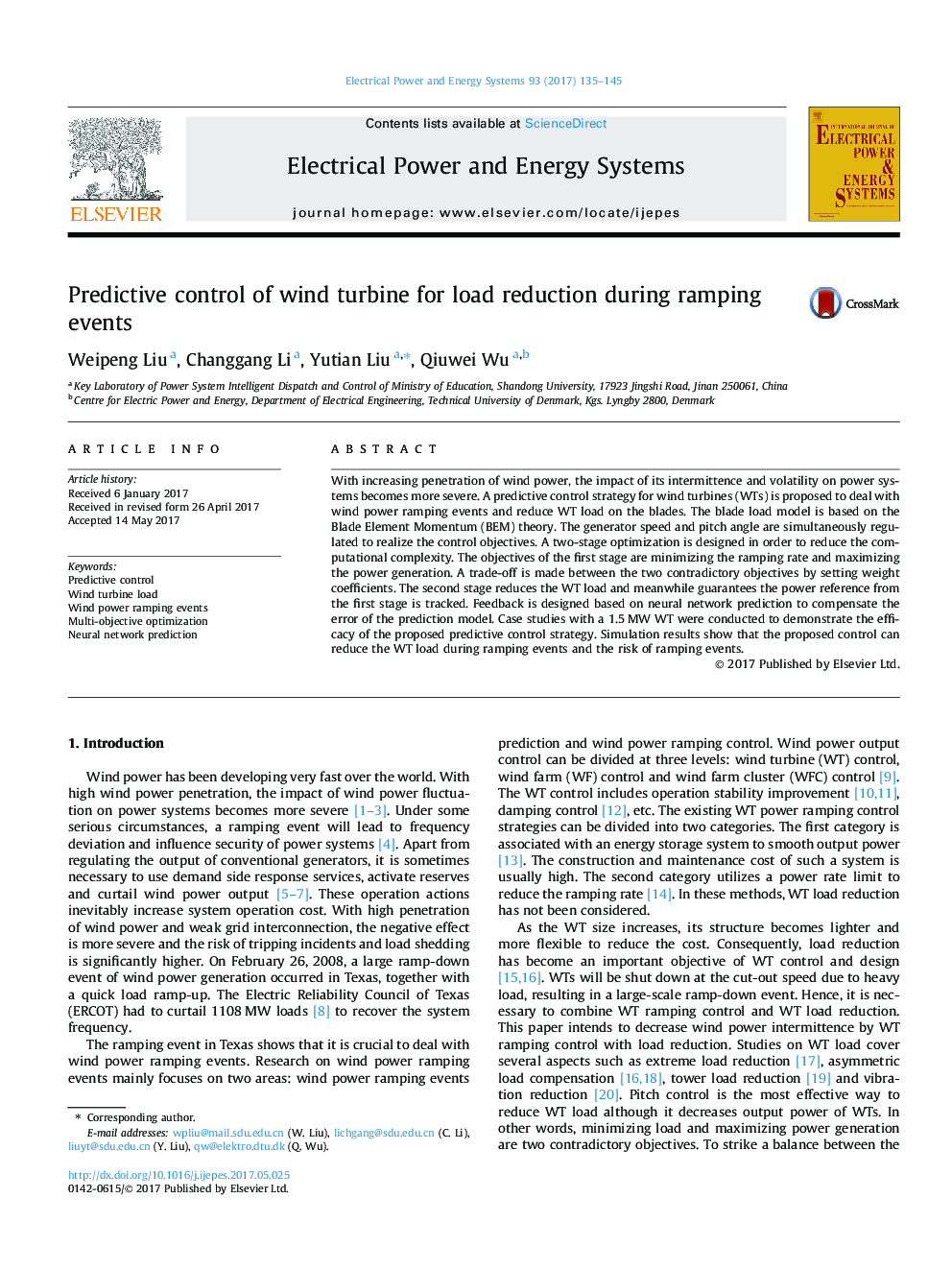| Article ID | Journal | Published Year | Pages | File Type |
|---|---|---|---|---|
| 4945505 | International Journal of Electrical Power & Energy Systems | 2017 | 11 Pages |
Abstract
With increasing penetration of wind power, the impact of its intermittence and volatility on power systems becomes more severe. A predictive control strategy for wind turbines (WTs) is proposed to deal with wind power ramping events and reduce WT load on the blades. The blade load model is based on the Blade Element Momentum (BEM) theory. The generator speed and pitch angle are simultaneously regulated to realize the control objectives. A two-stage optimization is designed in order to reduce the computational complexity. The objectives of the first stage are minimizing the ramping rate and maximizing the power generation. A trade-off is made between the two contradictory objectives by setting weight coefficients. The second stage reduces the WT load and meanwhile guarantees the power reference from the first stage is tracked. Feedback is designed based on neural network prediction to compensate the error of the prediction model. Case studies with a 1.5Â MW WT were conducted to demonstrate the efficacy of the proposed predictive control strategy. Simulation results show that the proposed control can reduce the WT load during ramping events and the risk of ramping events.
Related Topics
Physical Sciences and Engineering
Computer Science
Artificial Intelligence
Authors
Weipeng Liu, Changgang Li, Yutian Liu, Qiuwei Wu,
